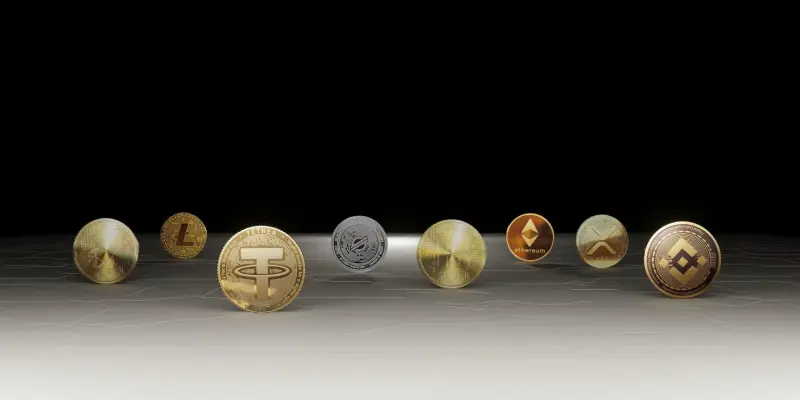Decentralized Finance (DeFi) has emerged as a revolutionary concept, aiming to create a financial system that operates without intermediaries by leveraging blockchain technology. However, the current state of DeFi often feels like a speculative “circular casino,” where the value is derived from trading crypto tokens. This model, while profitable in the short term, is fundamentally unsustainable and limits broader adoption. To propel DeFi to the next stage of growth and utility, integrating traditional financial assets into its ecosystem through tokenization is essential.
The Current State of DeFi
Speculative Nature and Limitations
The primary value of crypto tokens lies in their ability to earn yield paid by other participants trading these tokens. This cyclical speculative nature is deemed insufficient to drive the next significant phase of crypto adoption, which would require a 10-100x growth in adoption rates. Additionally, the inherent volatility of crypto tokens, based on market speculation, creates an unstable financial environment that discourages long-term investment and hinders the stability required for substantial growth. Although the circular trading model has driven short-term profits for some, it prevents DeFi from achieving its full potential as a transformative financial system.
Proven Feasibility of Blockchain-Based Financial Systems
DeFi protocols offer essential financial services such as payments, swaps, lending, derivatives, and insurance—all with reduced counterparty risk, lower costs, enhanced transparency, and broader accessibility. These benefits demonstrate the robustness of DeFi as a transformative financial technology, providing compelling reasons for its continued development and integration. However, to achieve sustainable growth, DeFi must evolve beyond its current limitations. Embracing broader adoption and usability means DeFi needs to go beyond speculative trading and explore more practical applications that incorporate traditional financial assets into blockchain ecosystems.
The Promise of Tokenization
Integrating Traditional Financial Assets
The real growth for DeFi lies in the tokenization of traditional financial assets. Tokenizing assets from the conventional financial system—like bank deposits, commercial paper, treasuries, mutual funds, money market funds, stocks, futures, options, and swaps—could potentially bring trillions of dollars’ worth of capital on-chain. This influx of tokenized assets would transition DeFi from a token-gambling structure to a more sustainable and practical finance system. Tokenization also facilitates easier and more efficient transactions by digitizing assets, which can be traded seamlessly on blockchain platforms with near-instant settlement times. As tokenized versions of traditional assets gain traction, the DeFi space can leverage this integration to build more innovative financial products and services that appeal to a broader audience.
Practical Examples of Tokenization
Tokenization is not just a theoretical concept but is actively being implemented. An example is BlackRock’s tokenized fund BUIDL on Ethereum, which has reached over $500 million in assets under management (AUM) within half a year. Additionally, the broader tokenized government securities market has exceeded $1.5 billion in value on public blockchains. The involvement of major asset managers like BlackRock is a promising sign for the future of tokenized financial assets. These practical implementations of tokenized assets demonstrate the tangible benefits and real-world applicability of integrating traditional finance with DeFi.
Stablecoins: A Proof of Concept
Popularity and Practical Utility
Stablecoins serve as a compelling proof of concept for tokenized assets. Their popularity, with over $150 billion of U.S. dollars tokenized on-chain and a monthly transfer volume of $1.4 trillion, emphasizes the real demand and usability of tokenized financial assets. Stablecoins exemplify the practical benefits of tokenized assets in action. The stability provided by pegging their value to fiats or other stable assets mitigates the volatility issues inherent to most crypto tokens. The growing adoption and use of stablecoins reflect a vital step towards integrating more traditional financial assets into the DeFi space, underscoring the realistic and groundbreaking opportunities tokenized assets present.
Enhancing Financial Inclusion
Stablecoins showcase a critical aspect of the envisioned future of DeFi by enhancing financial inclusion. They provide a means for individuals in underbanked regions to participate in the global economy, thus demonstrating the transformative potential of tokenized assets in creating a more inclusive financial system. As the integration of stablecoins becomes more pervasive, their role in promoting financial inclusion will continue to solidify DeFi’s place as a transformative force in the global financial landscape.
The Path Forward for DeFi
Moving Beyond Speculation
The foundational infrastructure of DeFi suggests a robust model for tomorrow’s global financial system. The future of DeFi will likely be defined by the broader acceptance and integration of tokenized traditional financial assets, making the system more sustainable and significantly bolstering its growth potential. This shift will require not just technological advancements but also regulatory clarity and industry collaboration to ensure a secure and transparent framework.
Embracing Tokenized Assets
By incorporating these conventional assets, DeFi can offer more stable and appealing investment opportunities, thereby attracting a broader audience and fostering long-term sustainability in the financial landscape.

